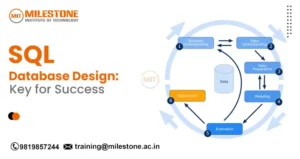In this world of programming, python has become one of the popular and most powerful languages for data scientists, developers as well as those who want to learn Python language. Python is now becoming a better choice in various industries for a wide range of applications. In this blog, we will deeply understand and analyze the key
advantages of Python, with applications and disadvantages. So let’s dive into it.
Advantages and Disadvantages of Python
| Advantages |
Disadvantages |
| Simplicity and Readability |
Performance Limitations |
| Versatility and Flexibility |
Global Interpreter Lock |
| Rich Ecosystem |
Runtime Errors and Debugging |
| Strong Support for Data Analysis and Machine Learning |
Dependency Management Challenges |
| Cross-Platform Compatibility |
Runtime Overhead |
| Rapid Prototyping and Development |
Limited Mobile and Browser Support |
These are the advantages and disadvantages of python, let’s dive into more details for better understanding.
Understanding the Advantages of Python:
1. Simplicity and Readability:
Python has well-defined syntax and it resembles the English language, which makes it easy to understand. Because of ease of development and program management, python has become the best choice for beginners as well as experienced programmers or developers.
2. Versatility and Flexibility:
Python’s versatility allows it to be used in various domains, including web development, data analysis, artificial intelligence (AI), machine learning (ML), scientific computing, and more. Its extensive standard library and third-party packages provide tools for almost any task, empowering developers to build complex applications efficiently.
3. Rich Ecosystem:
Python boasts a vibrant and active community that contributes to its ecosystem continuously. The Python Package Index (PyPI) hosts thousands of open-source packages, enabling developers to leverage pre-built solutions for their projects. This vast repository of libraries accelerates development and fosters collaboration within the Python community.
4. Strong Support for Data Analysis and Machine Learning:
Python has become the language of choice for data scientists and
machine learning engineers due to its robust libraries such as NumPy, Pandas, Matplotlib, and scikit-learn. These libraries offer powerful tools for data manipulation, visualization, and building machine learning models, facilitating the development of intelligent applications and predictive analytics.
5. Cross-Platform Compatibility:
Python’s interpreter-based approach ensures that code written in Python can run seamlessly on various platforms, including Windows, macOS, and Linux, without requiring any modifications. This cross-platform compatibility simplifies deployment and ensures consistent behavior across different operating systems.
6. Rapid Prototyping and Development:
The simplicity and readability of Python, combined with its extensive libraries, enable rapid prototyping and development of applications. Python’s dynamic typing and high-level abstractions allow developers to focus on solving problems rather than dealing with low-level details, accelerating the development cycle.
Understanding the Disadvantages of Python:
1. Performance Limitations:
Despite its simplicity and versatility, Python is an interpreted language, which can lead to performance bottlenecks compared to compiled languages like C++ or Java. While performance-critical tasks can be optimized using libraries such as NumPy or by integrating with lower-level languages, Python may not be the best choice for high-performance computing applications.
2. Global Interpreter Lock (GIL):
Python’s Global Interpreter Lock (GIL) can hinder its ability to leverage multi-core processors effectively. The GIL restricts simultaneous execution of multiple threads within a single Python process, limiting parallelism and concurrency in multi-threaded applications. Although there are workarounds such as multiprocessing and asynchronous programming, managing concurrency in Python can be challenging.
3. Runtime Errors and Debugging:
Python’s dynamic typing and lack of compile-time type checking can lead to runtime errors that may only surface during execution. Debugging such errors can be time-consuming, especially in large codebases, as the absence of compile-time checks makes it harder to detect and fix issues.
4. Dependency Management Challenges:
Python’s dependency management can be challenging, particularly when dealing with conflicting or outdated dependencies. Managing package versions and resolving dependency conflicts manually can be tedious, especially in projects with numerous dependencies or when deploying to multiple environments.
5. Limited Mobile and Browser Support:
While Python is widely used for server-side and backend development, its support for mobile and browser-based applications is limited compared to languages like JavaScript or Kotlin. Although frameworks like Kivy and BeeWare aim to bridge this gap, Python’s presence in mobile and web development remains relatively niche.
6. Runtime Overhead:
Python’s dynamic nature and runtime interpretation result in higher memory consumption and runtime overhead compared to statically-typed compiled languages. This overhead may impact performance in resource-constrained environments or applications requiring real-time responsiveness.
Applications of Python
1. Web Development:
Python’s web frameworks such as Django, Flask, and Pyramid continue to be popular choices for building robust and scalable web applications. With features like ORM (Object-Relational Mapping), templating engines, and built-in security measures, Python enables rapid development of dynamic web applications.
2. Data Science and Machine Learning:
Python remains the dominant language in the field of
data science and machine learning, powering tools and frameworks like Jupyter Notebook, TensorFlow, PyTorch, and SciPy. Its rich ecosystem of libraries and ease of integration with other technologies make Python indispensable for data analysis, predictive modeling, and AI research.
3. Automation and Scripting:
Python’s simplicity and readability make it well-suited for automating repetitive tasks and scripting. From system administration and network automation to task scheduling and data processing, Python scripts are widely used to streamline workflows and increase productivity across various industries.
4. Scientific Computing and Research:
Python’s extensive libraries for scientific computing, such as NumPy, SciPy, and
matplotlib, make it a popular choice for researchers and scientists. Python’s expressive syntax and interactive development environment facilitate experimentation and analysis in fields like physics, biology, chemistry, and engineering.
5. DevOps and Infrastructure Automation:
Python’s versatility extends to DevOps and infrastructure automation, where tools like Ansible, Puppet, and SaltStack leverage Python for configuration management, provisioning, and deployment. Python’s simplicity and cross-platform compatibility make it ideal for managing complex IT infrastructures efficiently.
Conclusion:
In conclusion, Python’s simplicity, versatility, and vibrant ecosystem have propelled it to the forefront of programming languages, making it a top choice for developers across various domains. While Python offers numerous advantages, such as readability, versatility, and rich libraries, it also faces challenges like performance limitations, dependency management, and runtime overhead. In Milestone Institute of Technology, they provide wide range of courses which includes data science, python, data analysis and many more. If you are focused on developing your career to new heights, then do check their website because the demand of python and data science is increasing day-by-day.
![Key Advantages of Python and its Applications [2024]](https://milestone.ac.in/blog-mit/wp-content/uploads/2024/03/Key-Advantages-of-Python-and-its-Applications.webp)



